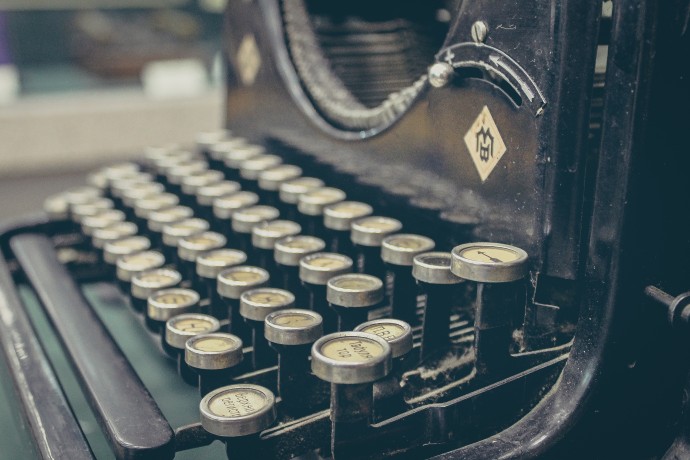As the most widely used image format in the world and the standard format for image compression, we’re all familiar with the JPEG. However, it’s far from perfect. After over 20 years of JPEG loyalty, is it time for something new?
There are, of course, the well-known GIF and PNG file formats, each popular in its own right. However, GIFs – while great for logos, icons and small animations – aren’t so good for high resolution photo quality. The PNG, on the other hand, is great for photo color, quality and transparency, but lacks compression.
The question is, can we look forward to a new standard of image format that not only combines the best of JPEGs and PNGs, but improves upon their faults?
Say Hello to the BPG (Better Portable Graphics)
Created in 2014 by programmer Fabrice Ballard, the BPG has massive potential to replace the JPEG due to improvements in both quality and file size. In this post, we’ll discuss the BPG vs JPEG comparison:
- Whether the JPEG really needs replacing, looking at the formats strengths and weaknesses.
- An explanation of what exactly the BPG format island how it came to be.
- What the BPG offers and how these features improve upon the JPEG’s shortcomings.
- The hurdles involved in the BPG becoming a true replacement as an image compression standard.
Does the JPEG Really Need Replacing?
The JPEG’s standardization dates back to as far as 1992. It has certainly served us well over the past two decades. Even by today’s standards, it’s a decent compression format. So, it’s not so much that the JPEG requires a replacement.
However, is decent really enough? The web is a billion times more saturated than it was in the ’90s. In 2016, shouldn’t digital images be great rather than simply adequate? An improvement on the JPEG standard could be a huge convenience for photographers, designers, developers and end users alike.
It’s a matter of making the web a better place through improvement, and that’s where the new BPG format comes in. But first, a look at the JPEG’s notable shortcomings.
Problem #1: Quality and File Size
One great thing about JPEG compression is that you can control it. However, this is where we run into a major trade-off.
The web is image-centric, with a high demand for quality visuals. If you want to show off awesome images on the web as JPEGs, you have to go with very little in terms of compression. But of course, with greater quality images comes greater bandwidth usage and decreased loading times.
In other words, if you want a JPEG to look flawless, it’s going to be rather unwieldy.
Problem #2: It’s Outdated
The age of a piece of technology shouldn’t matter if it’s still solving a problem in an effective manner.
The issue here, however, is that because the web has evolved, expectations in both visuals and functionality have risen dramatically. Quality matters, but so does speed. Having its downfalls and not being open source, the JPEG’s evolution has all but stagnated, while the digital world around it changes by the hour.
Problem #3: No Transparency Features
The PNG is a beautiful file format, offering not only advanced transparency and superior photo quality, but also suitability with flat color areas such as for logos and icons. Unlike the PNG format, the JPEG doesn’t offer transparency.
Still, PNGs tend to come with file size issues when used for higher resolution photos, and in many cases will be bigger in size than JPEGs. The PNG is superior to the JPEG in many ways, but cannot compete in terms of file size. So, neither is the ideal option.
What Can the BPG Offer That the JPEG Can’t?
We’ve seen where the JPEG’s main faults lie. Now, let’s take a closer look at this fantastic new image format: the BPG.
The BPG format is very young. The aforementioned Fabrice Bellard – also the creator of the FFmpeg software project – invented the BPG image format specifically to replace the JPEG. Is the BPG truly an improvement on the JPEG? Let’s see what it has to offer.
Advantage #1: It Offers Double the Quality
The BPG provides superior image quality and file size over the JPEG. In BPG format, you can have an image of the same size as a JPEG but with double the quality, or an image of equal quality at half the size.
This is a pretty major selling point, and the primary reason Bellard made the format in the first place. The vast majority of websites you typically visit make use of JPEGs, so the BPG has potential to be an epically widespread solution to image quality and file size issues online.
Advantage #2: It’s Transparent
Yep, the BPG format offers transparency – another great advantage over the JPEG. While PNGs also offer transparency, the BPG offers it alongside impressive compression ability.
Advantage #3: It’s Based on HVEC
The BPG is based on HVEC, a video compression standard twice as efficient as its predecessor (H.264). What this means is that the encoding process is far more efficient than the JPEG’s, hence why it yields better results.
On top of that, no special hardware is needed for the encoding and decoding of BPGs on smartphones and tablets. HEVC support is already included in most high-end models post-2014.
Advantage #4: It’s Open Source
The icing on the cake for this enhanced image format is that it’s open source. Unlike the JPEG, if the BPG does become an image format standard, it won’t become old and unimproved over time – it can be kept fresh through community contributions.
So BPG’s Superiority is Clear – What’s the Catch?
The BPG is a fine candidate for a JPEG replacement. There is indeed a catch, though: the lack of mass adoption.
It’s going to be brutally difficult to come out with a solution to push something like the JPEG – an astronomically popular image format – off its throne. For perspective, around 700 million websites are using JPEGs. If the BPG is going to make a run at the JPEG, an enormous initial wave of usage is a prerequisite. The problem is that BPGs currently only work on websites that use a 56kb JavaScript library created by Bellard. For the format to gain widespread usage and stand a chance of becoming a standard, it would require built-in support in all popular web browsers. Developers would need to use and recognize the BPG in place of the JPEG. The BPG is simply not there (yet).
BPG vs JPEG: Conclusion
Looking at how the JPEG offers decent but less-than-impressive results and no transparency features, it’s abundantly clear that there absolutely is room for a replacement. After 20+ years of usage, switching to the highly efficient BPG format would appear to be a no-brainer.
However, the BPG – providing better quality images and more compressed file sizes – has a ton of growing to do. So experiment with it – try BPGs on your website. Tell other website admins, developers or photographers about it. Share your perspective in the photography and web communities. Bringing this format further into the spotlight will be vital to the evolution of image quality.
Have you had any experience with using BPGs already? Does the format live up to your expectations and to its claims? Let us know in the comments below!





Leave a Reply